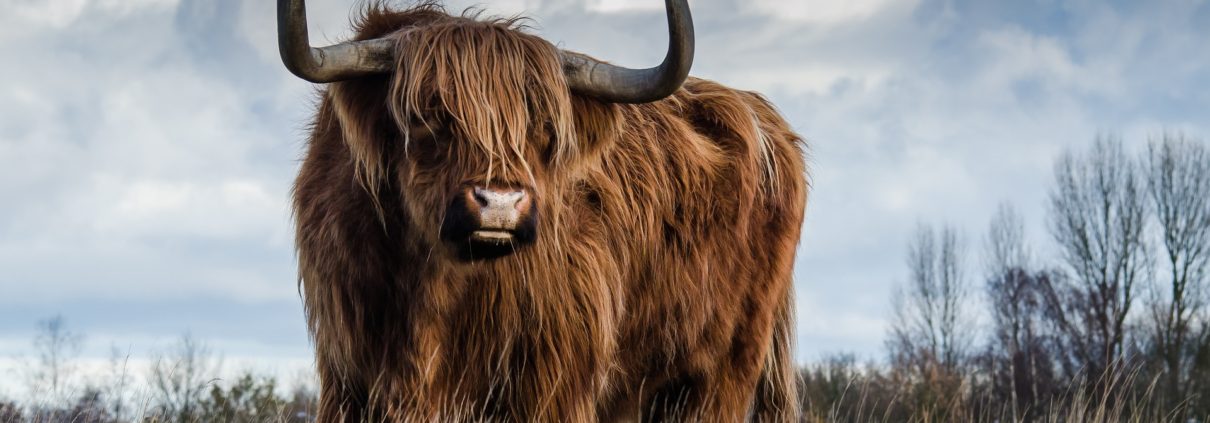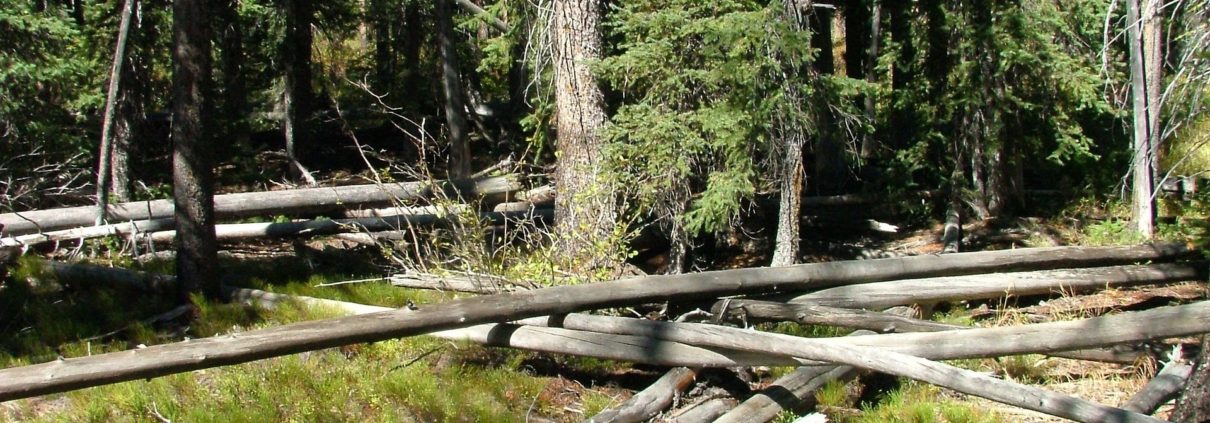Wildlife Management 101
This article on wildlife management was originally published in the Summer 2016 Terra Firma Magazine.
When learning that RLI had an interest in publishing an article on wildlife management, I have to admit, I was more than hesitant. My reservations didn’t stem from a “lack of knowledge”, my reservations were derived from “the knowledge I have,” and the criticism I’m aware it may attract. Success doesn’t come easy, nor without trial and error or a failure or two, and sometimes it doesn’t fit within a traditionally accepted box.
Wildlife management consists of so many factors, that the series of books, videos and blogs about the subject are literally overwhelming. Politics, legislation, social perceptions and opinions, environment, mathematics, chemistry, biology, regions, species, habitat and disease are all just a few on a lengthy list of complicated factors that affect managing wildlife.
In a nutshell, wildlife management is ultimately about conservation; the guardianship and best practices of safekeeping our greatest natural wild resources for future generations.
It also provides an extraordinary enjoyment through a passionate relationship between land and property owners, and justifiably continues to be a motivating factor for folks who purchase land!
I’m extremely fortunate to own, manage and control a respectable tract of leased and deeded ground in the Pacific Northwest. Taken with a laugh, my personal experience, hasn’t been learned easily, nor done inexpensively via traditional venues. Private land wildlife management practices are commonly dominated by Whitetail deer, a little waterfowl and an occasional fish or upland bird topic.
To be candid, the folks in the Midwest and down South are hands down, far ahead of the curve in regards to wildlife management. Whitetail deer are routinely the primary topic of choice. Justifiably, the Whitetail deer geographically dominate North America by the location they reside. Non-profit and traditional organizations such as the Quality Deer Management Association (QDMA) and Tecomate have done a fantastic job of promoting and making wildlife management materials available. However, I humbly believe, the Whitetail species is a much easier species to manage than many others, and another reason why I chose to write on this subject.
I know, I know… I’m sure I’ll never live that comment down (laugh). Okay, how about this, because there’s more information available on Whitetail wildlife management, justifiably because it’s the dominate non-migratory game in North America, I feel they’re easier to manage and understand (and should be) than other species with less availability and a broader migration range… and they’re easier to harvest than blacktail deer… KIDDING!… sheez… relax! Just trying to keep ya’ll interested in reading!?
In the early 2000s, after reading an in depth QDMA book, frequenting blogs, watching videos and living the lifestyle we sell, I made the commitment to start managing wildlife on our family’s ground about forty minutes outside of town. Easy right? Just install a few food plots and feeders, develop water sources (if they’re not already there) and voila, the wild game will come flocking in! Yeah? Not so much! As with many topics in life, a person can read all the books they can find, but real life experiences, both good and bad, are the world’s best teachers. In general, the basics are the same: provide a superior food source, water, and lush habitat. Doing this, is without question, enticing to wildlife. The primary difference between my management practices and traditional wildlife management practices are dictated by my region.
The wildlife management industry started to flourish in the early 2000s. Game cameras were few and a new “hot item” and feeders were on hunting shows everywhere – plus, they were all over the internet. Ever hear the saying, “Never test the depth of a river with both feet first”? That’s good advice! My original thought process was methodical, and focused on the generals; to enhance food, water and habitat within drainages that naturally lent themselves. Logically, it made sense to research and purchase available products that have worked so well for others? So I was off… Feeders! Cameras! Food plots! …and all the associated equipment!
Little did I know that I was in for a completely different education, and all the equipment would eventually be destroyed with minimal results of what I was trying to manage–big Blacktail deer, elk and turkey. The failing factor wasn’t a lack of genetics, nor wildlife population. It boiled down to my regional location, and the lack of experience managing wildlife in this location. Our terrain isn’t flat to rolling like the South or Midwest, where flatter open plains and pockets of creek bottom thickets monopolize regions. It’s the opposite where I manage wildlife. We have timber covered mountains, drainages and ridges as far as one can see; small pockets of open meadows monopolizing the terrain in hopes to get a glimpse of something. That situation also positions the ultimate unmanageable factor; multiple species of wildlife, including and not limited to, abundant predators! Most importantly, learning how and where those species habituate throughout the year and how to best manage my terrain and climate was a game changer for me.
Being new and few, the first few game cameras I purchased were “top of the line,” nothing but the best… HA! I’ve never been accused of catching on too quickly. After countless dollars in cameras being destroyed, no matter how well I concealed them, a light came on in my head: never set a trail camera after eating without washing and deodorizing your hands in Black Bear country! Their eyesight is poor in comparison to their smell and hearing. Regardless of what slight scent is on my hands when I set cameras, they’ll wind it–and evidently, bears think trail cams taste like chicken!
 Traditional feeders? UHG! My three-hundred pound metal feeders were knocked over, ripped open and crumpled up like cheap little tin cans. It’s unbelievable how strong Black Bear are! So, I improvised by designing and installing “Bear-proof feeders”. Ah-ha–Gotcha! Only to learn that feeders, if used too consistently, work like a dinner bell for our abundant mountain lion and predator populations. Luckily, I check my cameras frequently, and DID catch on quickly BEFORE witnessing any lion kills on camera. Embarrassing as it is, at first, I was like, “hey, there’s another mountain lion on camera? I didn’t know they’d come into feeders also after they go off?” Then, a Wait!? Ruh-Row-Shaggy! light bulb came on.
Traditional feeders? UHG! My three-hundred pound metal feeders were knocked over, ripped open and crumpled up like cheap little tin cans. It’s unbelievable how strong Black Bear are! So, I improvised by designing and installing “Bear-proof feeders”. Ah-ha–Gotcha! Only to learn that feeders, if used too consistently, work like a dinner bell for our abundant mountain lion and predator populations. Luckily, I check my cameras frequently, and DID catch on quickly BEFORE witnessing any lion kills on camera. Embarrassing as it is, at first, I was like, “hey, there’s another mountain lion on camera? I didn’t know they’d come into feeders also after they go off?” Then, a Wait!? Ruh-Row-Shaggy! light bulb came on.
So I now only use the feeders, installed in different drainages, sporadically throughout times of the day and week and primarily during the winter when natural feed and food plots sources are dormant from deep freezes and snow.
Late fall, winter and into the spring are the most crucial times of year for wildlife management in my opinion. The does are pregnant and bucks are either rutting or later shedding their antlers. It’s truly the best time to provide a solid protein source, vitamins and minerals to the males for recovery, during the rut and horn growth before they migrate to higher elevations. While essential nutrients to impregnated momma’s throughout the birthing and nursing process is pertinent.
All that being said, the most productive source of wildlife management that I’ve consistently witnessed by all types of wildlife are my licks. The food plots are nice, but there are a lot of natural competitive sources for deer and elk to browse in this area. Ours are primarily frequented by does and younger bucks while the mature ones are at a higher ground, only passing through.
My licks aren’t the blocked type purchased and shipped online. Those don’t last long around here. Bear will pick those up and even haul them off like little tennis balls in their mouths or sometimes eat them in one sitting like candy. I use a formula I found online years ago, posted on a blog by a retired biology teacher out of Missouri, called “Mo’s Lick”. I’d sure like to reconnect with that gentleman again to thank him and follow up.
He’d posted a detailed story about only being able to afford a five-acre tract of creek bottom ground to lease and hunt on. He knew there were good genetics in that region, but relying on those deer to reside within his creek bottom without purpose was an unreasonable hope. Similar to our mountainous country, his tillable food plot ground was limited by access and terrain. So, in turn, he started his own biology project using licks. His first deer harvested, and a common size in that thicket scored in the one-hundred and twenty inches, if I recall. By the fifth year, he’d harvested a one-hundred and eighty-six inch Whitetail! He never concluded whether he’d thought the original smaller deer were just young, underdeveloped and grew into mature bucks being under nourished prior to his lick supply or if the previously mentioned mature, good genetic bucks from the region frequented and resided his creek bottom more often because of the licks. His only conclusion was, he’d leased the ground for several years prior, constantly scouting smaller bucks.
After several years of consistently using the “Mo’s Lick” formula, the average buck’s antler size changed dramatically and more consistently within that thicket. I have used Mo’s lick since, and found great results. I have pictures of all species using Mo’s Lick: squirrel, fox, turkey, elk, deer and more. However, once again, our regional terrain plays a big role in consistency. We don’t routinely see the same bucks over and over like many Whitetail managers. When fawns hit the ground and the weather starts warming, the Blacktail deer bachelor up and head for higher elevations where it’s cooler–typical males, right? Babies are still young and can’t travel the distances or terrain that mature bucks go each summer.
In turn, I know what I call “my girls” by name when I see them on camera as spring progresses. I keep a fawn count, who’s had how many, a buck to doe ratio and so forth, while watching them grow up, or disappear to predators–when Mama appears on camera at the lick or food plot alone later in the year. By the time the babies are strong enough to make the migration to higher ground, fall is upon us again, days get cooler and the need to migrate higher becomes less and less desirable.
As winter storms blow in and the rut approaches, the mature bucks start heading to lower ground. Depending on which direction the storms blow in and the amount of snow that falls on which facing slope, this can dictate the drainage taken by those mature bucks over previous years. (Bear in mind, our ground isn’t flat, a grid of one-hundred and sixty acres can be three-hundred and twenty plus acres of surface ground, it’s just not flattened out on grid view). The younger bucks stay local for a couple years. Then, start to migrate each spring with the other mature bucks as they mature. Every year we get mature bucks on camera that we’ve never seen before, and likely may never see again.
Cattle have been known to do similar. Oregon is an open range state. We’ve often had cattle in our drainage, with tags belonging to a rancher whose range is three drainages over. As feed thins, they start heading down the drainage they’re in. Oregon is extremely diverse. I’m aware of an area, ten miles away as the crow flies, that buddies of mine manage who find the same deer sheds every year…? Those deer also migrate and only frequent the area in late fall and shed in winter. The difference is that there’s really only one major drainage option, a highway and a river that I believe naturally funnel those deer back every year.
For me, the wildlife management learning curve has been an expensive and dedicated commitment worth every second and cent spent. My advice is that there is no perfect solution or magic wand in managing wildlife. If there was, the book would have been written and no more needed. Consider your terrain, species and the final results you’re seeking to obtain, before buying a bunch of things that have worked well in other regions and species. Don’t get me wrong, I’ve used, continue to use and try new wildlife management products all the time–because they work! However, keep in mind that each area possesses different circumstances. Talk to others in your region that have been successful. What’s worked for my region, may not work for your region. Most of all get out and do it, enjoy the process. Management practices can change, but the goal should always stay the same. Best practices of safekeeping for our greatest natural wild resources, for future generations.
Mo’s Lick Recipe
(1) 50lb bag of Di-calcium phosphate (21% or more)
(1) 50lb bag of Trace Mineral Lick (fine)
(1) 50lb bag of Rock Salt (fine)
Dig a hole near a year near a water source, pour and mix ingredients well. I’ve added Selenium to the mix in higher elevations and received a good response from Elk also.
Thank you for taking the time to read my article and best of luck!
 About the author: Garrett Zoller, ALC, is the Managing Principal Broker of Record, and a founder of both LandAndWildlife.com and LandLeader. Garrett’s hands-on experience in the development of real estate, with strength in rural and commercial properties, administers an expert knowledge of recreational, agricultural and timber real estate.
About the author: Garrett Zoller, ALC, is the Managing Principal Broker of Record, and a founder of both LandAndWildlife.com and LandLeader. Garrett’s hands-on experience in the development of real estate, with strength in rural and commercial properties, administers an expert knowledge of recreational, agricultural and timber real estate.













 6. Trees. The other technique that I have seen used for long-term wealth building is hardwood trees. In a system called alley cropping, we establish rows of hardwood trees every 80 feet; walnut and red oak trees make a good example. A simple hot wire can protect them when they are young saplings. Soil scientist tell me that having the trees will not reduce the hay production until year eight to ten when they end up being tall enough that their shade and size will begin to reduce the hay production on the range. There is an offset in most cases, if we follow this plan, the timber value at 30 years is greater than the purchase price of the land. This can be an especially lucrative harvest if its timing aligns with the farm owner’s retirement.
6. Trees. The other technique that I have seen used for long-term wealth building is hardwood trees. In a system called alley cropping, we establish rows of hardwood trees every 80 feet; walnut and red oak trees make a good example. A simple hot wire can protect them when they are young saplings. Soil scientist tell me that having the trees will not reduce the hay production until year eight to ten when they end up being tall enough that their shade and size will begin to reduce the hay production on the range. There is an offset in most cases, if we follow this plan, the timber value at 30 years is greater than the purchase price of the land. This can be an especially lucrative harvest if its timing aligns with the farm owner’s retirement. About the Author:
About the Author: 







 About the Author:
About the Author: 


 About the Author:
About the Author: 











